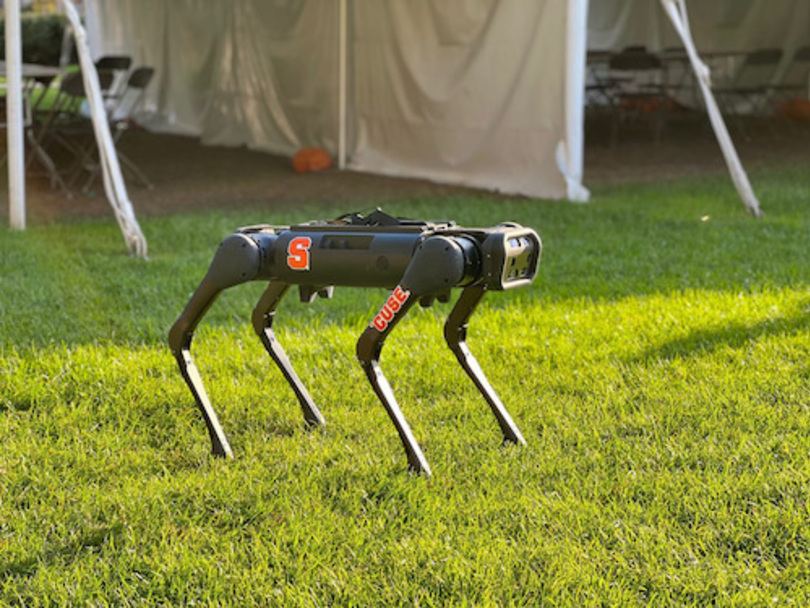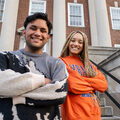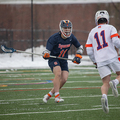SU’s BioInspired Institute brings interdisciplinary approach to cutting-edge tech

With faculty members specializing in biology, engineering and science fields, the Bioinspired Institute promotes collaboration and innovation. Courtesy of Jiayu Ding
Get the latest Syracuse news delivered right to your inbox.
Subscribe to our newsletter here.
When Professor Zhenyu Gan was a graduate student at the University of Michigan, traveling and finding researchers outside of his field was a tedious process that he couldn’t replicate often. Even the annual or biannual engineering conferences he would attend didn’t help foster the long-term collaboration he needed.
But after Syracuse University started the BioInspired Institute, Gan could finally find easier ways to collaborate and pursue his animal-inspired innovations. The institute is a partnership between faculty from the College of Arts and Sciences and the College of Engineering and Computer Science. According to its records, the institute started its first round of cluster hire initiatives in 2018, and got its start a year later.
“We can only meet (at the conference) once and we have so many ideas we want to chat with each other, but here at Syracuse we already have the BioInspired Institute,” Gan said. “It’s very natural.”
Jeremy Steinbacher, director of operations for the institute, said it also provides a great opportunity for students to get research training and be exposed to interdisciplinary ways of thinking.
Faculty members within the institute are also looking at proposing interdisciplinary courses to expose this way of thinking to students at an earlier stage, Gan said. Like the work they do at the institute, the courses would be taught collaboratively by the professors across the departments.
Through cluster hires, SU brought on various faculty members within biology, engineering and science fields with the express purpose of bringing them together to collaborate on various bio-inspired projects. Five years after their initial hires, the institute is starting to see the innovation of its members realized.

Stephanie Zaso | Digital Design Director
With a mechanical engineering background, Gan wasn’t often exposed to the thinking and views of academics within other disciplines. Through the institute, he can collaborate with people within these different disciplines much easier. These collaborations have already proved to be beneficial when it comes to his specialization in robotics. He and his collaborators created four-legged robots, a design inspired by animals in nature.
“If you look at nature, like animals, they already optimize through evolution,” Gan said. “This type of collaboration and also the communication among multiple fields is very, very important for people like me to not only build stuff but build something that can work.”
Gan’s view of the way nature can inspire innovation is shared with his colleagues at the institute. Austin Garner, an assistant professor in the biology department and co-leader of the Form and Function focus group with Gan, also believes nature can influence human designs.
“I know how a biologist views a biological system, but it’s interesting to ask the question how does a physicist view a biological system? How does an engineer view a biological system?” Garner said. “The Institute is initiating and facilitating interactions between academics that break traditional disciplinary boundaries.”
Garner and his collaborators are focused on looking at how animals interact with surfaces in their environment, specifically looking at geckos, anoles and sea urchins.
“Learning about and understanding how these natural adhesive systems work and deal with environmental challenges contributes to our overarching goal of inspiring and informing human-made adhesive design,” Garner said.
While the institute faced some growth drawbacks due to COVID-19, they are still looking forward to increasing their faculty members and further pushing forward their goal of bio-inspired innovations, Steinbacher said.
“There’s all sorts of really cool things that can happen when you get engineers talking with biologists and physics people talking with chemists,” Steinbacher said. “All of these traditionally separate disciplines start to see areas where they can help each other out.”





